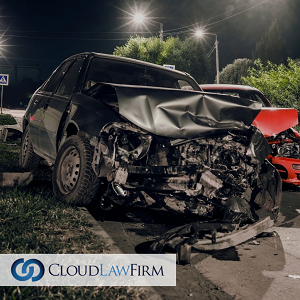- 1-905-452-8193
- Contact Us
- Member Login
- Get Listed Today
- 220,911 members

When a driver makes a 180-degree turn, known as a u-turn, they are executing one of the most dangerous maneuvers that a driver can make, even in designated areas where U-turns are legal. The driver needs to ensure there is enough time to safely execute their turn without colliding with or impeding traffic. They also need to look out for pedestrians, cyclists, and other traffic hazards, all while executing a turn.
Even if a driver is making a legal U-turn, there is still risk and excess care needs to be taken. U-turns pose an increased risk for oncoming vehicles, pedestrians, and for vehicles traveling alongside the driver making the U-turn. Examples of U-turn accidents include:
Sideswipe accidents can happen when the driver making the U-turn isn’t able to make a tight enough turn and swipes the side of a vehicle in an adjacent lane.
T-bone collisions happen when the vehicle making a U-turn is hit by an oncoming vehicle.
Pedestrian accidents can occur when someone makes an illegal U-turn when a pedestrian has a walk signal.
A collision with a bicycle can happen when a vehicle making a U-turn turns wide and crosses out of the intended lane and into a bike lane.
When a driver turns right at a red light at the same time another driver is making a U-turn, a sideswipe accident can happen.
A driver may be rear-ended when taking too long to execute a turn before oncoming traffic reaches the intersection.
Florida U-turn Laws - Are U-Turns Illegal in Florida?
Florida law only allows U-turns when specific conditions are met:
The driver must be able to execute the turn safely
The U-turn cannot interfere with other traffic
Traffic signs or control signals do not prohibit a U-turn where the turn is to be executed
Any U-turn that does not meet the above conditions is considered an illegal U-turn. In Florida, making an illegal U-turn is considered a moving violation, which carries a 3-point penalty on the driver’s license and a fine. A moving violation happens when a law is violated by the driver of a vehicle while it is in motion. Other moving violations include speeding and failure to stop.
A variety of factors need to be considered for determining fault in a U-turn accident. Unfortunately, it is not always immediately obvious who is at fault. The driver making the U-turn is often found to be at fault in a U-turn accident in Florida, even when making a legal U-turn. Reasons for this include the turning driver may have limited visibility, or their vehicle may not be easily visible to oncoming traffic. Vehicles making U-turns also tend to hold up traffic while waiting to turn, and the increased amount of time it takes to make a U-turn offers more opportunities for accidents.
Regardless of who appears to be at fault at the scene of an accident, it is always recommended that anyone injured in a U-turn accident contact an experienced car accident injury lawyer to ensure their rights are protected.
Anyone injured in a U-turn accident in Florida should contact a car accident lawyer before agreeing to or signing anything. Insurance companies work hard to pay out as little as possible, regardless of their client’s need for care. They work even harder to not have to pay for accident injuries when their client is found to be at fault for the accident. A U-turn accident lawyer will ensure your rights are protected throughout the claims process and beyond, so you can focus on proper care and recovery.
|
|
